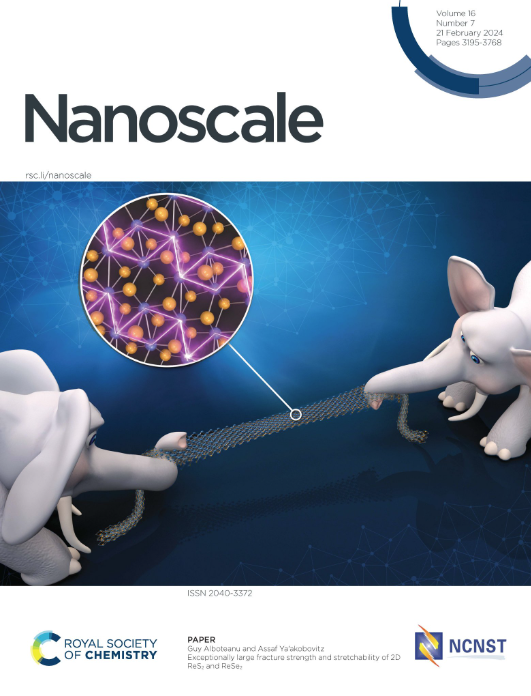Optimizing InAsPSb/InAsP cladding structure to control carrier overflow and enhance emission in multiple quantum well LEDs
IF 5.8
3区 材料科学
Q1 CHEMISTRY, MULTIDISCIPLINARY
引用次数: 0
Abstract
We fabricated III-V compound semiconductor-based LEDs using InAsSb/InAsPSb multiple quantum-well (MQW) and investigated the effect of InAsPSb/InAsP cladding structure (doping concentration and thickness) on light emission. The LEDs were categorized into three types. MQW LED1 (lowest doping concentration and thinnest cladding layer), MQW LED2 (same doping concentration and cladding thickness as LED1 but with a thicker quantum barrier (QB) than MQW LED1), and MQW LED3 (highest doping concentration and thickest cladding layer). Electroluminescence (EL) results showed that MQW LED3, with higher doping concentration and thicker cladding layer, suppressed carrier overflow and exhibited a single, stronger emission peak. In contrast, MQW LED1 and MQW LED2, with lower doping concentration and thinner cladding layers, showed double weaker emission peaks due to carrier overflow. Temperature-dependent EL measurements indicated that MQW LED3 had superior thermal performance, with higher activation energy, indicating better carrier confinement. Simulations revealed that optimizing the interfacial barrier height between the cladding layer and the QB is crucial for controlling carrier overflow and enhancing carrier injection. Specifically, increasing the barrier height between the InAsPSb cladding layer and QB limits carrier overflow, while decreasing the barrier height between the InAsP cladding and the InAsPSb cladding layers improves carrier injection and increases EL intensity. These findings highlight the importance of optimizing the cladding structure to suppress carrier overflow, improve carrier recombination, and enhance the performance of III-V MQW-based optoelectronics.优化InAsPSb/InAsP包层结构以控制载流子溢出和增强多量子阱led的发射
利用inaspb /InAsPSb多量子阱(MQW)制备了III-V型化合物半导体基led,并研究了InAsPSb/InAsP包层结构(掺杂浓度和厚度)对发光性能的影响。led被分为三种类型。MQW LED1(掺杂浓度最低、包层最薄)、MQW LED2(掺杂浓度和包层厚度与LED1相同,但量子势垒(QB)比MQW LED1更厚)、MQW LED3(掺杂浓度最高、包层最厚)。电致发光(EL)结果表明,较高掺杂浓度和较厚包层的MQW LED3抑制了载流子溢出,呈现出一个较强的单发射峰。相比之下,掺杂浓度较低、包层较薄的MQW LED1和MQW LED2由于载流子溢出而呈现出双弱的发射峰。温度相关的EL测量表明,MQW LED3具有更好的热性能,具有更高的活化能,表明更好的载流子约束。模拟结果表明,优化包层与QB之间的界面势垒高度是控制载流子溢出和增强载流子注入的关键。具体而言,增加InAsPSb包层与QB之间的势垒高度可以限制载流子溢出,而降低InAsPSb包层与InAsPSb包层之间的势垒高度可以改善载流子注入并增加EL强度。这些发现强调了优化包层结构以抑制载流子溢出、改善载流子重组和提高III-V mqw光电子性能的重要性。
本文章由计算机程序翻译,如有差异,请以英文原文为准。
求助全文
约1分钟内获得全文
求助全文
来源期刊

Nanoscale
CHEMISTRY, MULTIDISCIPLINARY-NANOSCIENCE & NANOTECHNOLOGY
CiteScore
12.10
自引率
3.00%
发文量
1628
审稿时长
1.6 months
期刊介绍:
Nanoscale is a high-impact international journal, publishing high-quality research across nanoscience and nanotechnology. Nanoscale publishes a full mix of research articles on experimental and theoretical work, including reviews, communications, and full papers.Highly interdisciplinary, this journal appeals to scientists, researchers and professionals interested in nanoscience and nanotechnology, quantum materials and quantum technology, including the areas of physics, chemistry, biology, medicine, materials, energy/environment, information technology, detection science, healthcare and drug discovery, and electronics.
 求助内容:
求助内容: 应助结果提醒方式:
应助结果提醒方式:


